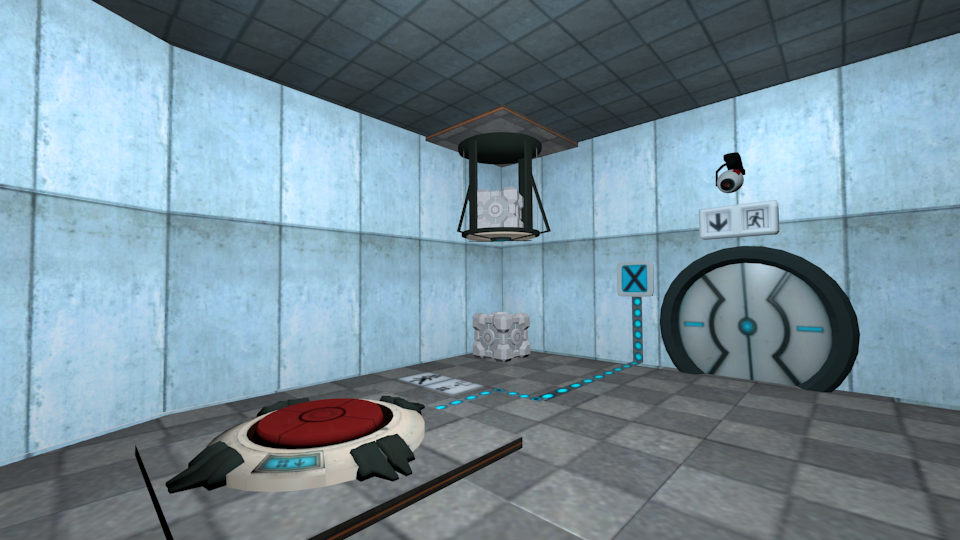Contradictory Levels
- Sage Dupuy
- Mar 24, 2020
- 3 min read
Updated: Apr 6, 2020
Something that I've only recently started to truly contemplate is how purposeful you must plan out levels for the player to be both completely confused and then astonished and feeling good once they figure it out. As I've been developing new levels for Special Slimes, a prototype I made in school, it's dawned on me how complex some puzzle games level design must've been. I revisited a favorite game of mine I played with my family upon release. Portal, a critically acclaimed puzzle game that's been described as a masterpiece. After the short cut scene at the beginning I noticed immediately that contradictory design was being used right away. Take a look at the first level in portal rendered by poethetortoise on DeviantArt:

In this level your goal is very clear. Go through the door. The only problem is that the door is closed and the only way to open the door is to step on a button. Immediately when you step off the button though the door closes and you don't have enough time to get through the door. This comes as an immediate impossibility the player faces right at the start. The solution to this is very simple though, put the cube in the room on the button so you may walk through the door. This exact concept is repeated so many times in the game and many other games like it: Something seems impossible to do and completely contradictory then you stumble into something that seamlessly finds a way through the impossibility and makes it almost mundane.
Here's a slightly more complex version incorporating assumptions from the player. For context the player controls the red slime and blue slime in this level at the same time. If the red slime touches the blue slime it combines with it and makes it a big blue slime. Only the blue slime can jump and if any slime touches a spike they die. One of the slimes must make it to the rainbow finish to win the level.
Now here's where it starts to play with contradictions. Since the player moves both the slimes at the same time and if the blue slime combines with the red slime it can't fit through the hole to get the the rainbow goal on the right. How is it supposed to get to the goal? When the player moves right they can't escape combining with the red slime. If they move left the red slime dies and if they jump while moving right then they can't get back up to the exit. Here's how this can play with the players assumptions. There are many parts in this that mess with the players assumptions, but here are the biggest ones. First is the assumption that the player needs to have all the slimes to win. Second is that they must jump down to the lower level because why else would it be there? Both of these combine to make quite a good puzzle that has left several people stumped, confused, frustrated, then relieved when they realize the solution.
With my experience in level design and play testing it's very interesting to see how many different ways a person can be purposefully misled into creating a puzzle for themselves. The next time you play a puzzle game look out for these types of puzzles and bask in the knowledge that you know how they operate.
Comments